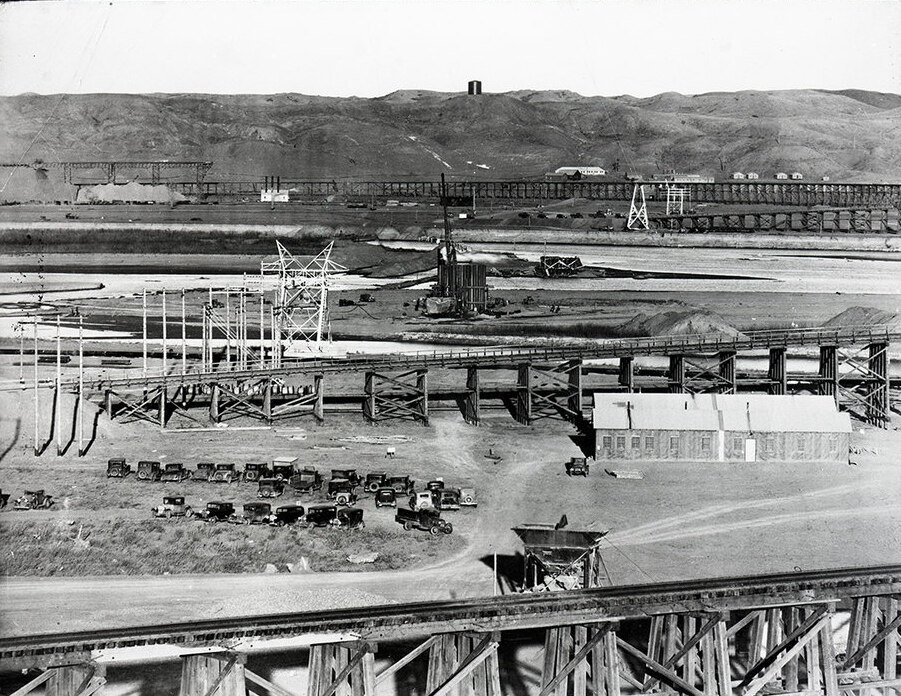Why Don’t We Build Like We Used To?
"So if these projects were built in record time 90 years ago, why do today’s vital projects take so long?"
The Empire State Building was built in a little over a year. The Golden Gate Bridge was built in just under four and half years. And here in Montana, the Fort Peck Dam – still one of the largest earthen dams in the world, even today – was built in under a decade.
Even more astonishing is these projects were built in the first half of the 20th century, all without today’s modern equipment. For example, The Fort Peck Dam construction (shown below) was completed in 1940.
So if these projects were built in record time 90 years ago, why do today’s vital projects take so long?
Frontier President & CEO, Kendall Cotton explains that one reason for this is that “our nation’s permitting and environmental review process is fundamentally broken.”
“Excessive paperwork and lengthy delays under the environmental permitting process can add millions to the cost of important projects like new power plants, highways or transmission lines.”
But the delays don’t end once an environmental permit is obtained either.
“The uncertainty of litigation also makes projects more expensive, with the DOJ noting that NEPA receives the most litigation of any environmental law.”
While the delays and added costs due to our broken permitting and environmental review process impacts nearly all projects, it is particularly troublesome for energy projects.
“Readers should consider which is better for the climate: forcing critical projects through years of red tape and endless litigation, or building the infrastructure necessary for a clean and abundant energy future as fast as we possibly can?”
Thankfully, our leaders are recognizing the need for permit reform. You can find out about the reforms aimed at allowing Montana to build again, by clicking here.
For Liberty,
Tanner Avery
The Latest
Opportunities To Fix Forests In The Farm Bill
The Farm Bill is set to expire in September of this year, leaving policy makers the summer to include policies which will help improve the health of Montana forests. In her latest column, PERC Policy Director, Hannah Downey, explains 5 ways leaders can make it happen:
1. Improve Good Neighbor Authority
2. Fix Cottonwood
3. Extend Partnership Contracts and Cooperative Agreements
4. Expand Use of Prescribed Burns
5. Direct Implementation of Existing Tools
To learn more about each of these solutions you can click here.
Frontier of Political Entrepreneurship
Last week, Frontier President & CEO, Kendall Cotton joined the Liberty Portal Podcast to discuss political entrepreneurship and how Frontier Institute’s vision is helping to move Montana towards more freedom.
Farewell Frontier!
I want to take this moment to say goodbye to everyone in the Frontier Institute community, as I will be moving on to new things. This last year has afforded me the incredible experience of helping to make Montana thrive.
In my time at Frontier, I had the opportunity to dive into energy policy and make the case for Montana to embrace its abundant energy potential. My three-part series showed that utilizing the rare earth deposits at Sheep Creek can propel Montana into an innovative, high-tech manufacturing hub while helping the environment and better protecting America. I wrote and talked with legislatures about reducing judicial bias and ensuring independent oversight.
But, by far my biggest project was tracking the Red Tape Relief Initiative. This included tracking the bill proposals through the legislative process and highlighting how regulatory sandboxes can be a proactive mechanism for future red tape reduction.
It has been a privilege to be a part of the effort to reduce government barriers to prosperity. I’d like to thank Frontier President & CEO, Kendall Cotton for this opportunity. And I’d also like to thank Tanner for always being there to help me through the editorial process.
While I’m now focused on new opportunities in my home state of Kentucky, I look forward to following Frontier in the coming years as it continues to fight for a freer Montana.
In Liberty,
Chris Isaacs

